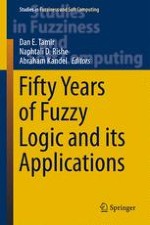2015 | OriginalPaper | Buchkapitel
On Z-numbers and the Machine-Mind for Natural Language Comprehension
verfasst von : Romi Banerjee, Sankar K. Pal
Erschienen in: Fifty Years of Fuzzy Logic and its Applications
Aktivieren Sie unsere intelligente Suche, um passende Fachinhalte oder Patente zu finden.
Wählen Sie Textabschnitte aus um mit Künstlicher Intelligenz passenden Patente zu finden. powered by
Markieren Sie Textabschnitte, um KI-gestützt weitere passende Inhalte zu finden. powered by
